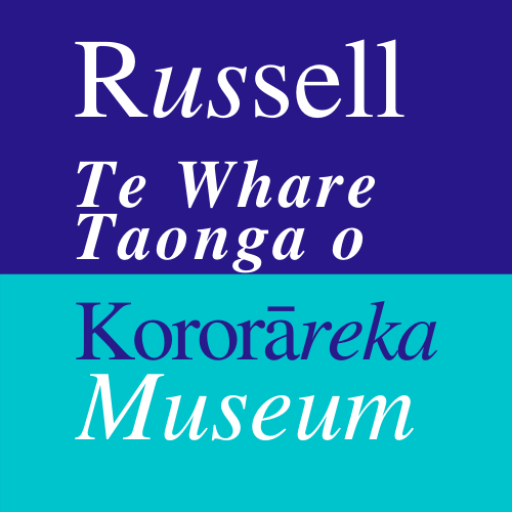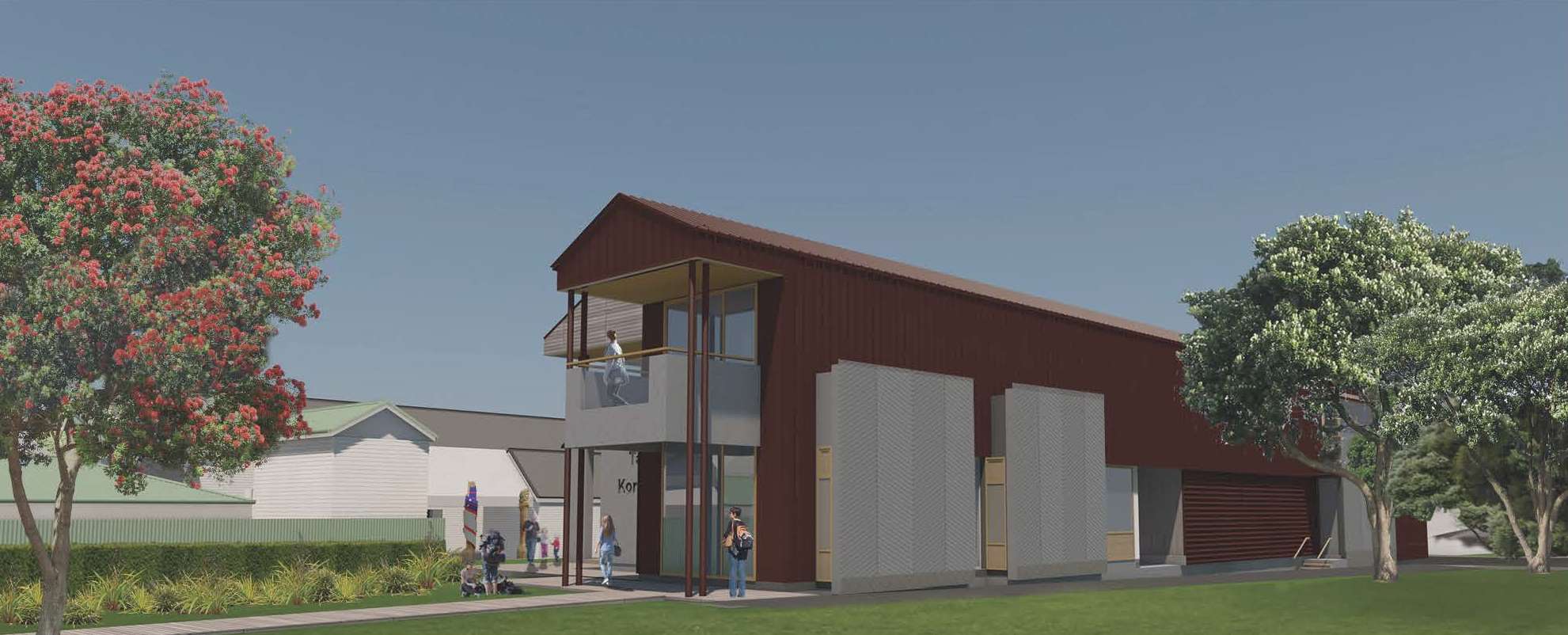Museum Redevelopment
[/et_pb_text][et_pb_text admin_label=”Page Subtitle” _builder_version=”4.8.2″ text_font=”Poppins||||||||” text_font_size=”18px” text_line_height=”1.8em” header_font=”||||||||” background_layout=”dark” animation_style=”fade”]Reimagining our cultural heritage
[/et_pb_text][/et_pb_column][et_pb_column type=”1_3″ _builder_version=”3.25″ custom_padding=”|||” custom_padding__hover=”|||”][/et_pb_column][/et_pb_row][/et_pb_section][et_pb_section fb_built=”1″ admin_label=”Class Details Section” _builder_version=”4.8.2″ background_color=”#d8d5e0″ custom_padding=”0px||0px||true|false”][et_pb_row admin_label=”Class Details Area” _builder_version=”4.8.2″ min_height=”69px” custom_padding=”10px|0px|10px|0px|true|false”][et_pb_column type=”4_4″ _builder_version=”4.8.2″ custom_padding=”|||” custom_padding__hover=”|||”][et_pb_text admin_label=”Title” _builder_version=”4.8.2″ text_font=”||||||||” header_font=”||||||||” header_2_font=”Poppins|600|||||||” header_2_text_align=”center” header_2_font_size=”36px” header_2_line_height=”1.2em” custom_margin=”10px||0px||false|false” custom_padding=”|||” animation_style=”fade”]Museum Redevelopment
[/et_pb_text][et_pb_divider color=”#00c4cc” _builder_version=”4.8.2″ locked=”off”][/et_pb_divider][/et_pb_column][/et_pb_row][et_pb_row admin_label=”Course Overview Area ” _builder_version=”4.8.2″ min_height=”560px” custom_margin=”|||” custom_padding=”|||”][et_pb_column type=”4_4″ _builder_version=”4.8.2″ custom_padding=”|||” custom_padding__hover=”|||”][et_pb_text admin_label=”Title” _builder_version=”4.8.2″ header_font=”||||||||” header_3_font=”Poppins|600|||||||” header_3_line_height=”1.2em” custom_margin=”||20px|” animation_style=”fade”]The beginnings
[/et_pb_text][et_pb_text _builder_version=”4.8.2″ text_font=”Poppins||||||||” text_font_size=”18px” text_line_height=”1.8em” header_font=”||||||||” header_3_font=”||||||||” animation_style=”fade”]Trustees noted that the current long-term display was last refurbished in 2001 and was in need of an upgrade. Discussions around how best to refresh it and the Museum itself led to the setting up of a Redevelopment Project team in April 2015. This comprised a mix of Trustees, Museum staff, and residents with appropriate skill sets to get a Bulk and Location Plan and Concept Development Plan before Council planning staff.
This team started with vim and vigour but by late 2016 was struggling to get their plans past the Board. The board allocated funds from the Museum’s reserves to move things forward and new curator Kate Martin was appointed as Project Manager to take the project forward to Resource Consent. Using the outline plans developed by the Project Team, the board sought registrations of interest from architects with experience in designing Museums and similar projects. Isthmus were selected as the architects and Story Inc were selected for the design of exhibits.
In parallel, the project, which aligned with the Tuia 250 commemorations in 2019, was included in the Tai Tokerau Economic Action Plan as a project which was of signficance to the region’s economic development. This lead to the funding of Howarth ITL to produce a business case and the plans were submitted to Council.
Resource consent was granted in November 2019.
[/et_pb_text][/et_pb_column][/et_pb_row][/et_pb_section][et_pb_section fb_built=”1″ admin_label=”Gallery Section ” _builder_version=”4.8.2″ background_color=”#1e1d1c” custom_padding=”50px||50px||false|false”][et_pb_row admin_label=”Gallery Area” _builder_version=”4.8.2″ custom_padding=”5px||||false|false” locked=”off”][et_pb_column type=”4_4″ _builder_version=”4.8.2″ custom_padding=”|||” custom_padding__hover=”|||”][et_pb_text admin_label=”Title” _builder_version=”4.8.2″ text_font=”||||||||” header_font=”||||||||” header_2_font=”Poppins|600|||||||” header_2_text_align=”center” header_2_font_size=”36px” header_2_line_height=”1.2em” background_layout=”dark” custom_margin=”||0px|” custom_padding=”|||” hover_enabled=”0″ sticky_enabled=”0″]New building designs
[/et_pb_text][et_pb_divider color=”#00c4cc” _builder_version=”4.8.2″ locked=”off”][/et_pb_divider][et_pb_text _builder_version=”4.8.2″ text_font=”Poppins||||||||” text_text_color=”#FFFFFF” text_font_size=”18px” text_line_height=”1.8em” custom_margin=”25px|||” animation_direction=”left” hover_enabled=”0″ locked=”off” sticky_enabled=”0″]Kororāreka Russell has been an area of occupation for many centuries. Oral histories tell us of the earliest arrivals from Polynesia nearly 1,000 years ago, and a fishing village being established on these shores. Early Māori inhabitants welcomed Europeans who settled here in the early 1800s and the seaside village became a hub of trade and commerce due to its deep anchorage. Buildings sprung up on the waterfront, nestled between traditional kaianga (Māori settlements), hotels, warehouses, wharves and churches. The bustling fishing village became notorious in the Pacific as a den of iniquity. The quiet colonial village that exists today belies the area’s turbulent past.
In designing a new building located in a Heritage Precinct, the architects drew on the early history of the town, that of an industrious fishing village. Their challenge was to create an inviting ‘storehouse’ that invites, entices, respects and fits within the Strand Heritage Precinct, its neighbouring properties and celebrates its outstanding location.
The concept draws on the Museum as a container of artefacts of which maritime history are a key focus. A boatshed, as a concept makes many connections to these maritime stories and waterfront location, relating to both ship building and stores. The clearly defined form, double gabled rooves with smaller openings, timber cladding (vertical and horizontal) relate strongly to the colonial buildings in Russell, in a meaningful way.
[/et_pb_text][/et_pb_column][/et_pb_row][et_pb_row column_structure=”1_3,1_3,1_3″ admin_label=”Photos” _builder_version=”4.8.2″][et_pb_column type=”1_3″ _builder_version=”4.8.2″ custom_padding=”|||” custom_padding__hover=”|||”][et_pb_image src=”https://www.russellmuseum.org.nz/wp-content/uploads/2021/03/040919_IGL_3866-Russell-Museum_RC-1_Page_02.jpg” title_text=”Introduction” show_in_lightbox=”on” align=”center” force_fullwidth=”on” align_tablet=”center” align_phone=”” align_last_edited=”on|desktop” _builder_version=”4.8.2″ animation_style=”fade”][/et_pb_image][/et_pb_column][et_pb_column type=”1_3″ _builder_version=”3.25″ custom_padding=”|||” custom_padding__hover=”|||”][et_pb_image src=”https://www.russellmuseum.org.nz/wp-content/uploads/2021/03/040919_IGL_3866-Russell-Museum_RC-1_Page_03-scaled.jpg” title_text=”Dual History” show_in_lightbox=”on” force_fullwidth=”on” align_tablet=”center” align_phone=”” align_last_edited=”on|desktop” _builder_version=”4.8.2″ animation_style=”fade”][/et_pb_image][/et_pb_column][et_pb_column type=”1_3″ _builder_version=”3.25″ custom_padding=”|||” custom_padding__hover=”|||”][et_pb_image src=”https://www.russellmuseum.org.nz/wp-content/uploads/2021/03/040919_IGL_3866-Russell-Museum_RC-1_Page_04-scaled.jpg” title_text=”Building History” show_in_lightbox=”on” force_fullwidth=”on” align_tablet=”center” align_phone=”” align_last_edited=”on|desktop” _builder_version=”4.8.2″ animation_style=”fade”][/et_pb_image][/et_pb_column][/et_pb_row][et_pb_row column_structure=”1_3,1_3,1_3″ admin_label=”Photos” _builder_version=”3.25″][et_pb_column type=”1_3″ _builder_version=”3.25″ custom_padding=”|||” custom_padding__hover=”|||”][et_pb_image src=”https://www.russellmuseum.org.nz/wp-content/uploads/2021/03/040919_IGL_3866-Russell-Museum_RC-1_Page_05-scaled.jpg” title_text=”Early Russell architecture” show_in_lightbox=”on” force_fullwidth=”on” align_tablet=”center” align_phone=”” align_last_edited=”on|desktop” _builder_version=”4.8.2″ animation_style=”fade”][/et_pb_image][/et_pb_column][et_pb_column type=”1_3″ _builder_version=”3.25″ custom_padding=”|||” custom_padding__hover=”|||”][et_pb_image src=”https://www.russellmuseum.org.nz/wp-content/uploads/2021/03/040919_IGL_3866-Russell-Museum_RC-1_Page_06-scaled.jpg” title_text=”Early buildings” show_in_lightbox=”on” force_fullwidth=”on” align_tablet=”center” align_phone=”” align_last_edited=”on|desktop” _builder_version=”4.8.2″ animation_style=”fade”][/et_pb_image][/et_pb_column][et_pb_column type=”1_3″ _builder_version=”3.25″ custom_padding=”|||” custom_padding__hover=”|||”][et_pb_image src=”https://www.russellmuseum.org.nz/wp-content/uploads/2021/03/040919_IGL_3866-Russell-Museum_RC-1_Page_07-scaled.jpg” title_text=”Concept development” show_in_lightbox=”on” force_fullwidth=”on” align_tablet=”center” align_phone=”” align_last_edited=”on|desktop” _builder_version=”4.8.2″ animation_style=”fade”][/et_pb_image][/et_pb_column][/et_pb_row][et_pb_row column_structure=”1_3,1_3,1_3″ admin_label=”Photos” _builder_version=”3.25″][et_pb_column type=”1_3″ _builder_version=”3.25″ custom_padding=”|||” custom_padding__hover=”|||”][et_pb_image src=”https://www.russellmuseum.org.nz/wp-content/uploads/2021/03/040919_IGL_3866-Russell-Museum_RC-1_Page_08-scaled.jpg” title_text=”Architectural form” show_in_lightbox=”on” force_fullwidth=”on” align_tablet=”center” align_phone=”” align_last_edited=”on|desktop” _builder_version=”4.8.2″ animation_style=”fade”][/et_pb_image][/et_pb_column][et_pb_column type=”1_3″ _builder_version=”3.25″ custom_padding=”|||” custom_padding__hover=”|||”][et_pb_image src=”https://www.russellmuseum.org.nz/wp-content/uploads/2021/03/040919_IGL_3866-Russell-Museum_RC-1_Page_09-scaled.jpg” title_text=”Context and textures” show_in_lightbox=”on” force_fullwidth=”on” align_tablet=”center” align_phone=”” align_last_edited=”on|desktop” _builder_version=”4.8.2″ animation_style=”fade”][/et_pb_image][/et_pb_column][et_pb_column type=”1_3″ _builder_version=”3.25″ custom_padding=”|||” custom_padding__hover=”|||”][et_pb_image src=”https://www.russellmuseum.org.nz/wp-content/uploads/2021/03/040919_IGL_3866-Russell-Museum_RC-1_Page_10-scaled.jpg” title_text=”Landscape concept” show_in_lightbox=”on” force_fullwidth=”on” align_tablet=”center” align_phone=”” align_last_edited=”on|desktop” _builder_version=”4.8.2″ animation_style=”fade”][/et_pb_image][/et_pb_column][/et_pb_row][/et_pb_section][et_pb_section fb_built=”1″ _builder_version=”4.8.2″ _module_preset=”default”][et_pb_row admin_label=”Course Overview Area ” _builder_version=”4.8.2″ custom_margin=”|||” custom_padding=”|||” locked=”off”][et_pb_column type=”4_4″ _builder_version=”4.8.2″ custom_padding=”|||” custom_padding__hover=”|||”][et_pb_text admin_label=”Title” _builder_version=”4.8.2″ header_font=”||||||||” header_3_font=”Poppins|600|||||||” header_3_line_height=”1.2em” custom_margin=”||20px|” animation_style=”fade”]
Stage 2
[/et_pb_text][et_pb_text _builder_version=”4.8.2″ text_font=”Poppins||||||||” text_font_size=”18px” text_line_height=”1.8em” header_font=”||||||||” header_3_font=”||||||||” animation_style=”fade”]With Resource Consent approved, the Trustees needed to turn their attention to the next steps, working on funding for the the project. However, before this could start in earnest, the COVID19 global pandemic and the world changed. Given such a long time had elapsed since the start of the project, the shift in thinking in terms of Te Tiriti and the interest in learning Te Reo and Māori generally, not to mention the impact of the pandemic, the Trustees decided to go back to the Community. In addition, there was a shift in thinking of what a Museum might look like, how it engaged with visitors and what was its purpose. So at the beginning of 2021, a survey was carried of the Russell Community to get their input in what they wanted to see in the Museum and public Library facilities, being part of the Russell Centennial Trust Board’s mandate.
[/et_pb_text][/et_pb_column][/et_pb_row][et_pb_row column_structure=”1_3,2_3″ use_custom_gutter=”on” gutter_width=”0″ make_equal=”on” admin_label=”Workshops and Events Area” module_class=” et_pb_row_fullwidth” _builder_version=”4.8.2″ width=”100%” width_tablet=”100%” width_phone=”” width_last_edited=”on|desktop” max_width=”100%” max_width_tablet=”100%” max_width_phone=”” max_width_last_edited=”on|desktop” custom_margin=”0px||||false|false” custom_padding=”0px||0px||false|false” make_fullwidth=”on” locked=”off” collapsed=”off”][et_pb_column type=”1_3″ _builder_version=”4.8.2″ background_color=”rgba(165,124,76,0.18)” custom_padding=”20px|5%|10px|5%|false|false” custom_padding__hover=”|||”][et_pb_text admin_label=”Title” _builder_version=”4.8.2″ header_font=”||||||||” header_2_font=”Poppins|600|||||||” header_2_font_size=”36px” header_2_line_height=”1.2em” custom_padding=”10px||||false|false” animation_style=”fold” animation_direction=”left” animation_intensity_fold=”10%” animation_starting_opacity=”100%”]Community Survey
[/et_pb_text][et_pb_divider color=”#00c4cc” _builder_version=”4.8.2″ locked=”off”][/et_pb_divider][et_pb_text _builder_version=”4.8.2″ text_font=”Poppins||||||||” text_text_color=”#666666″ text_font_size=”18px” text_line_height=”1.8em” custom_margin=”25px|||” animation_style=”fold” animation_direction=”left” animation_intensity_fold=”10%” animation_starting_opacity=”100%”]Given the amount of time that had elapsed since the original discussions which had taken place nearly 5 years ago, the Board felt that they needed to go out to the Community to ask for their feedback. It was also important to factor in the impact of the global pandemic and its impact on the overall development In particular, what they felt the role of a modern day Museum should be, where library, research, cultural story telling with balanced narratives and interactive experiences with an educational focus are becoming best practise.
[/et_pb_text][/et_pb_column][et_pb_column type=”2_3″ _builder_version=”4.8.2″ background_color=”#0C71C3″ background_enable_image=”off” background_repeat=”repeat” custom_padding=”|||” custom_padding__hover=”|||”][et_pb_divider show_divider=”off” _builder_version=”4.8.2″ locked=”off”][/et_pb_divider][et_pb_gallery gallery_ids=”3795,3796,3797,3798,3799,3800,3801,3802,3803,3804,3805,3806″ fullwidth=”on” _builder_version=”4.8.2″ _module_preset=”default” module_alignment=”center”][/et_pb_gallery][/et_pb_column][/et_pb_row][et_pb_row admin_label=”Course Overview Area ” _builder_version=”4.8.2″ custom_margin=”|||” custom_padding=”|||” locked=”off”][et_pb_column type=”4_4″ _builder_version=”4.8.2″ custom_padding=”|||” custom_padding__hover=”|||”][et_pb_text admin_label=”Title” _builder_version=”4.8.2″ header_font=”||||||||” header_3_font=”Poppins|600|||||||” header_3_line_height=”1.2em” custom_margin=”||20px|” animation_style=”fade”]
Next steps
[/et_pb_text][et_pb_text _builder_version=”4.8.2″ text_font=”Poppins||||||||” text_font_size=”18px” text_line_height=”1.8em” header_font=”||||||||” header_3_font=”||||||||” animation_style=”fade”]The survey has clearly indicated that the community wants more access to information about Māori histories, whakapapa, culture and places where people can carry out research in a library like setting. There is also a strong interest in cultural wānanga, learning Te Reo, and the arts. Working in partnership with Kororāreka Marae, there are clearly opportunities to do more.
Many people were interested in getting involved and this is encouraging because this is a project that the community needs to support and get behind if it is to be successful.
[/et_pb_text][/et_pb_column][/et_pb_row][/et_pb_section][et_pb_section fb_built=”1″ admin_label=”Newsletter Section” _builder_version=”4.8.2″ background_color=”#007ba7″ custom_padding=”30px||120px|||” locked=”off”][et_pb_row admin_label=”Newsletter Area” _builder_version=”3.25″ custom_padding=”||10px|”][et_pb_column type=”4_4″ _builder_version=”3.25″ custom_padding=”|||” custom_padding__hover=”|||”][et_pb_text admin_label=”Title” _builder_version=”4.8.2″ text_font=”||||||||” header_font=”||||||||” header_2_font=”Poppins|600|||||||” header_2_font_size=”36px” header_2_line_height=”1.2em” text_orientation=”center” background_layout=”dark” max_width=”550px” module_alignment=”center” custom_margin=”||0px|” animation_style=”fade” locked=”off”]Get involved!
[/et_pb_text][et_pb_divider color=”#00c4cc” _builder_version=”3.2″ locked=”off”][/et_pb_divider][et_pb_text _builder_version=”4.8.2″ text_font=”Poppins||||||||” text_text_color=”rgba(255,255,255,0.68)” text_font_size=”18px” text_line_height=”1.8em” header_font=”||||||||” text_orientation=”center” max_width=”550px” module_alignment=”center” custom_margin=”|||” custom_padding=”|||” animation_style=”fade” locked=”off”]Join our mailing list, get involved and be kept up to date with with what’s happening at the Museum.
[/et_pb_text][/et_pb_column][/et_pb_row][et_pb_row column_structure=”1_4,1_2,1_4″ admin_label=”Email Option Area” _builder_version=”4.8.2″ custom_padding=”0px||0px|”][et_pb_column type=”1_4″ _builder_version=”4.8.2″ custom_padding=”|||” custom_padding__hover=”|||”][/et_pb_column][et_pb_column type=”1_2″ _builder_version=”4.8.2″ custom_padding=”|||” custom_padding__hover=”|||”][et_pb_signup mailchimp_list=”curator@russellmuseumorgnz|d295519723″ success_message=”Thank you!” use_spam_service=”on” _builder_version=”4.8.2″ body_font=”Poppins|600||on|||||” use_background_color=”off” custom_button=”on” button_text_size=”14px” button_bg_color=”#1b2232″ button_bg_color_gradient_start=”#29c4a9″ button_bg_color_gradient_end=”#2b87da” button_border_width=”8px” button_border_color=”#1b2232″ button_border_radius=”0px” button_letter_spacing=”2px” button_font=”||||||||” button_icon=”%%3%%” custom_margin=”|||” custom_padding=”|||” animation_style=”fade” button_text_size__hover_enabled=”off” button_one_text_size__hover_enabled=”off” button_two_text_size__hover_enabled=”off” button_text_color__hover_enabled=”off” button_one_text_color__hover_enabled=”off” button_two_text_color__hover_enabled=”off” button_border_width__hover_enabled=”off” button_one_border_width__hover_enabled=”off” button_two_border_width__hover_enabled=”off” button_border_color__hover_enabled=”off” button_one_border_color__hover_enabled=”off” button_two_border_color__hover_enabled=”off” button_border_radius__hover_enabled=”off” button_one_border_radius__hover_enabled=”off” button_two_border_radius__hover_enabled=”off” button_letter_spacing__hover_enabled=”off” button_one_letter_spacing__hover_enabled=”off” button_two_letter_spacing__hover_enabled=”off” button_bg_color__hover_enabled=”off” button_one_bg_color__hover_enabled=”off” button_two_bg_color__hover_enabled=”off”][/et_pb_signup][/et_pb_column][et_pb_column type=”1_4″ _builder_version=”4.8.2″ custom_padding=”|||” custom_padding__hover=”|||”][/et_pb_column][/et_pb_row][/et_pb_section][et_pb_section fb_built=”1″ admin_label=”Footer Section” _builder_version=”4.8.2″ background_color=”#281a8b” min_height=”525.5px” custom_padding=”90px||68px|||” global_module=”3861″ saved_tabs=”all”][et_pb_row column_structure=”1_3,1_3,1_3″ admin_label=”Footer Area” _builder_version=”3.25″][et_pb_column type=”1_3″ _builder_version=”3.25″ custom_padding=”|||” custom_padding__hover=”|||”][et_pb_text ul_type=”none” admin_label=”Title” _builder_version=”4.8.2″ text_font=”Poppins||||||||” text_text_color=”rgba(255,255,255,0.7)” text_font_size=”16px” text_line_height=”1.8em” ul_font=”Poppins||||||||” ul_text_align=”center” header_font=”||||||||” header_2_font=”Poppins||||||||” header_2_text_align=”center” header_2_font_size=”24px” header_2_line_height=”1.4em” text_orientation=”center” background_layout=”dark” custom_margin=”||15px|” custom_padding=”|||” animation_style=”fade”]Address
2 York Street,
Russell Kororāreka
Bay of Islands
Aotearoa New Zealand
Call Us
09 403 7701
(+64) 9 403 7701
Email: info@russellmuseum.org.nz
Opening hours
10.00 – 4.30 daily
Last visitors admitted at 3.45 pm

